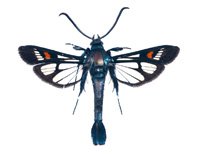Abstract
A new species of swamp rat of the genus Scapteromys from the Meridional Plateau of Southern Brazil is described. Morphological, molecular, and karyological analysis support the recognition of the new species, distinct from S. aquaticus and S. tumidus. Scapteromys sp. nov. is significantly smaller than the congeneric taxa considering most of the external and craniometric measurements and the pelage is conspicuously grayer and darker. It can be distinguished from S. tumidus by the laterally extended thenar pad of the manus and the parallel edges of the hamular process of the pterygoid, and from S. aquaticus by a grayer and darker pelage and smaller values of most external and craniometric measurements. Karyological analysis indicated a difference in chromosome numbers across the distributional range: 2n=34 and 2n=36. A total of 11 haplotypes were found along the range of the new species within the biogeographic province of Araucaria angustifolia Forest. Strongly supported substructure was found within the new taxon, resulting in two reciprocally monophyletic clades.

